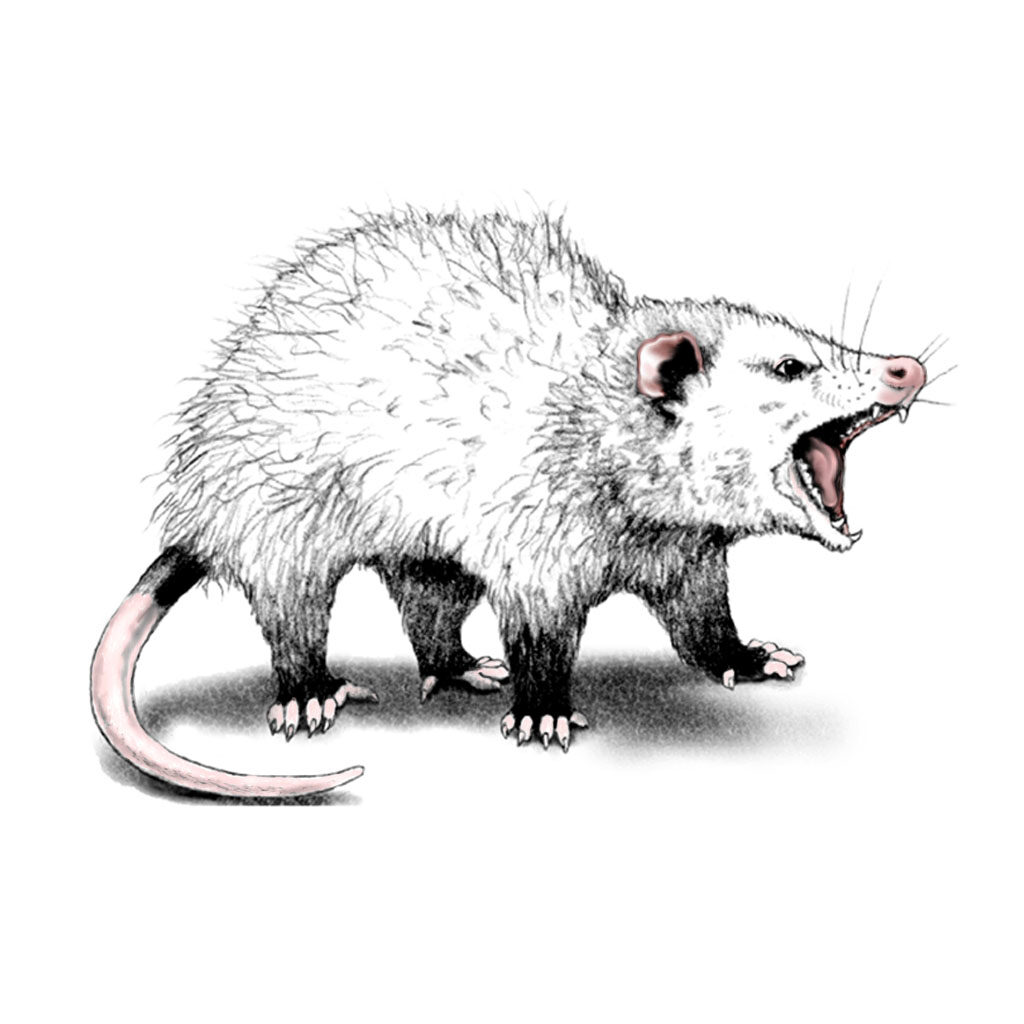Virginia Opossum

The Native American Algonquians called the Virginia Opossum apassum, or “white beast,” and it is truly white (with a bit of black, and pink extremities), one of the few mammals with such peculiar coloring. It’s also one of the few mammals in Belize that is also found in the United States, where it is working its way northward as the climate warms up, since it is very prone to frostbite. It’s also the only marsupial found north of Mexico.
In case you’re a bit fuzzy on your biology, a marsupial is a mammal with a pouch in which extremely undeveloped young are carried and nursed until they develop fur and crawl out on their own accord. Here’s a video with lots of interesting info.
This opossum is quite common in Belize’s rain forests, along with a couple of other opossum species. A big male wandered into my house one night through an open door, and after I shoved it out with a broom and closed the door, I walked out on the veranda with a flashlight to see it standing there in the dark with its mouth wide open baring all fifty teeth, and a big drool of saliva pooling on the veranda floor beneath it as it snarled savagely at that nasty door for a full ten minutes. Here’s what it sounded like. S.C.A.R.Y!
But really, it’s all bluff. If approached, it would try to escape rather than attacking or biting. If cornered and it discovers its snarls aren’t working, it may panic, black out, and fall over “dead.” Most predators won’t eat something they don’t kill themselves, so after awhile they wander off leaving the opossum to revive on its own. It’s not really “playing dead” – the seizure leaves it unconscious, and it may actually get eaten if the predator is hungry enough. The Virginia opossum’s life span is short, 3 years in the wild is about the limit.
Opossums will visit your house looking for anything edible that you’ve pitched out onto the compost heap. Keep your garbage can tightly closed, as they are expert scroungers. In the forest, they eat insects, worms, snails, lizards, frogs, nestlings, fruits, nuts and carrion (dead animals).